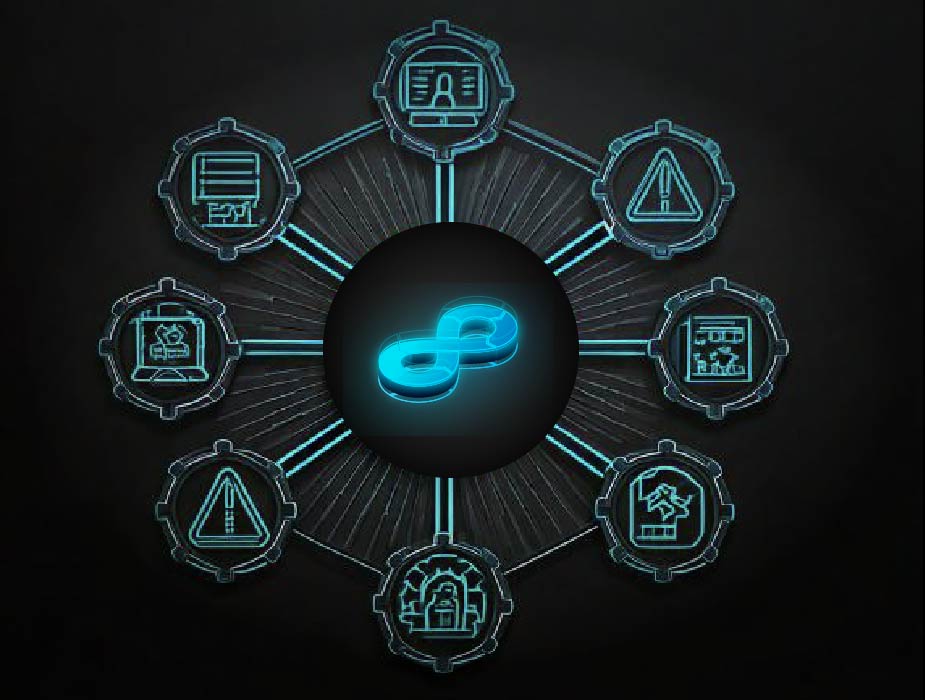Join our newsletter



DevOps, a methodology that has been revolutionizing the tech world for nearly two decades, was originally designed to grant software teams more control and efficiency when releasing applications.
By bridging development and operations, it enabled organizations to streamline processes and reduce the friction that often delayed software deployments. Its true rise began between 2011 and 2015, when major industry players such as Gartner acknowledged its potential, and methodologies like the Scaled Agile Framework (SAFe) started incorporating it into their guidelines.
This was also the period when cloud computing gained momentum—services like Amazon Web Services (AWS) began setting standards for scalability and flexibility, inspiring CIOs and tech leaders across industries to adopt it as a means of competing with agile startups that leveraged cloud-based DevOps for rapid innovation.
For many Chief Information Officers (CIOs) at larger enterprises, the idea of automating software releases was thrilling. However, there was a prevailing notion that this was “just a developer thing,” which raised concerns about ownership and governance within organizations.
It quickly became apparent that DevOps was more than a trend for developers—it represented a paradigm shift in how software was built, deployed, and maintained. Over time, it has grown into a comprehensive approach that encompasses culture, automation, and continuous improvement, tailored uniquely to each company’s needs.
This individualistic approach has led to confusion among tech leaders who struggle to prioritize the right practices, particularly in larger organizations where DevOps implementation requires addressing far more complexity than in startup environments.
Today, CIOs face a multitude of new challenges. The demand to manage hybrid and multi-cloud infrastructures has grown, adding pressure to maintain a balance between legacy systems and new technologies. Simultaneously, boardroom expectations have skyrocketed, as digital transformation and AI adoption are no longer just goals but imperatives.
Below are six common mistakes that companies make in their DevOps journey, along with guidance on how to overcome them:
DevOps isn’t just about tools; it’s a cultural change that encourages teamwork and automation to improve customer experiences and keep up with changes. Many CIOs mistakenly treat it as a simple IT project, focusing only on tools and forgetting the importance of changing how teams work together.
To avoid this, CIOs should focus on building a culture that promotes collaboration across the company and not just within the IT team. By fostering teamwork and shared goals, companies can speed up their time to market, improve product quality, and stay flexible in a changing world.
Tip: Ask your leaders what they understand about DevOps, agile practices, and product management. This will help you align your company’s culture with a balance between innovation and running operations smoothly.
Some teams rush into continuous deployment, frequently pushing new updates without considering if the company is ready. Continuous delivery can be great, but it’s not always suitable for every business. You need to ensure your DevOps teams have strong testing, security, and monitoring practices in place before deploying frequently.
For example, a poorly planned update recently caused major disruptions to 8.5 million computers, leading to flight cancellations worldwide. Such incidents show why it’s important to have proper testing, monitoring, and backup plans.
Tip: Before setting up continuous deployment, understand the risks and impacts on your business and customers. Make sure you have strong testing, tracking, and backup systems in place.
Automation is a big part of DevOps, but it’s not everything. CIOs often overlook how DevOps practices affect user and developer experiences. For instance, using tools like feature flags can help teams test new ideas without fear of causing major issues. However, these tools are often used just to manage access to new features, missing the opportunity to improve user experience.
Also, shifting tasks like testing and security to developers can be overwhelming and reduce productivity. It’s important to balance the workload to keep developers from getting burnt out.
Tip: Have regular discussions with your teams about how DevOps affects people, from customers to employees. Clearly define roles to avoid overloading anyone or creating gaps in responsibility.
Giving teams the freedom to choose their tools can lead to better outcomes, but it can also create problems. Without some guidelines, teams may end up using different tools that don’t work well together, which increases complexity and costs.
To avoid this, consider setting up platform engineering teams that build shared tools and processes for everyone to use. This can make your software development faster and more reliable.
Tip: Find a balance between letting teams experiment with new tools and establishing standards. Make sure teams are focused on business goals, not just using the latest technology.
Even if your teams are familiar with security practices, you still need a clear strategy for managing risks. Many CIOs think they just need to keep track of known issues, but it’s important to also focus on preventing problems in the first place.
For example, using AI tools to help with coding can free up time for innovation, but it’s still crucial to follow strong design and testing practices to ensure quality.
Tip: Make sure that leaders have a plan for addressing risks, not just new features. Regularly review how teams are prioritizing risk management.
In conclusion, while DevOps offers transformative potential for enterprises, successful implementation requires more than just adopting new tools or processes; it’s about fostering a culture of collaboration, clear communication, and continuous improvement.
By avoiding common pitfalls—like treating DevOps as a mere IT project, diving into continuous delivery without sufficient preparation, overlooking user and developer experience, allowing unregulated tool choices, and assuming teams can manage risks independently—CIOs can unlock the full value of DevOps.
Embracing DevOps as a strategic initiative that integrates cultural, operational, and technical considerations will help enterprises adapt to fast-changing demands, drive innovation, and deliver more consistent value to both customers and stakeholders.